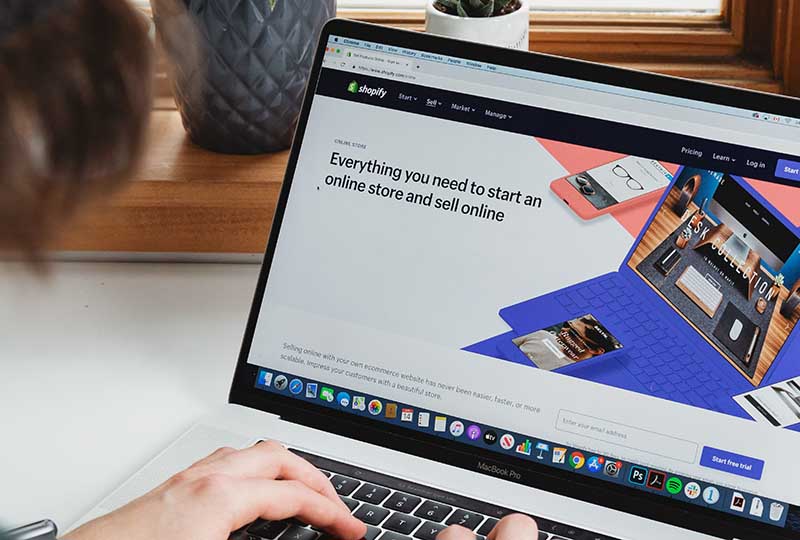19 Aug
By the end of 2020, Statista estimates that eCommerce sales are expected to reach $4.2 trillion. For business owners, that’s more than enough reason to push them to sell online. With more people shopping online, there’s really no way to go but the eCommerce way.
However, building an online store website can be intimidating, especially to newbies. Because of this, we’ve listed these tips that can help you start from scratch. Read on and begin your company’s journey to becoming a booming eCommerce store.
Find a Suitable Ecommerce Website Builder

To build your online store website, you first need to find an eCommerce website builder. These are online software that can help you build your store even without any knowledge in coding and other high-tech skills. These website builders come in a variety of prices, performance, and reliability, which makes choosing one a challenge.
The top two website builders are Shopify, which is ideal for big businesses, and Wix is recommended for smaller ones. You can always explore and find one that would suit your business perfectly. The criteria would depend on the nature of your business, what features you’ll need, and how much you’re willing to spend on it, among other things.
Many of these website builders offer free trials, and you can use them to find the most suitable fit for you.
Choose the Right Plan for Your Business
The services of a website builder vary in prices. Some offer free, and some offer plans that cater to different types of businesses. An excellent way to know which plan you’ll need is to ask yourself the following questions:
- What and how many products are you going to sell?
Most website builders allow businesses to sell as many as they can while some have limits. This is mainly because of the transaction fees that can mean more revenue for you if you choose a plan with fewer limitations.
- How much are you willing to spend?
Your budget can also determine what plan to go for. Again, this will depend on what you plan to sell, the features you’ll be needing, and many other factors.
- What features will you need?
Online store websites will have different requirements. Most website builders will offer a plan that suits most business needs. If you’ve tried one or two using their free trials, you’ll get a good grasp of what features you need.
You can always choose a website builder that offers its services for free such as Weebly and Big Cartel. Unfortunately, some limits won’t allow you the flexibility that paid website builder plans can give you. In addition, as your business grows, you’ll be needing upgrades that will still demand you to pay fees.
Get Your Domain Name
This may sound technical, but it’s something you’re already familiar with. A domain name is a URL that identifies your online website store. It can be www.myflowershop.com or www.shoestore.com. Your domain name can spell success for your brand as it can build trust and establish authority.
Most website builders offer this type of service, which you pay yearly. Ensure that your domain name is unique and possibly contains a keyword that can help you rank in search engines.
Customize Your Online Store Website

This is the fun part—choosing your eCommerce template and customizing the whole site. Depending on the website builder, you’ll have to select a template and divide them into categories. While this is the fun part, it also requires you to put effort into designing your store.
Always choose designs that will resonate with your target audience. Don’t rely on what looks good to you as the store will be about your prospects. Better still, hire a professional graphic designer to come up with landing pages or call-to-action buttons that grab attention.
List Your Products or Services
Once done with the design, you need to add your offerings. You need to create a category for your products with the names, prices, size, and other pertinent details. This will help viewers understand the product clearly and hopefully entice them to buy.
To make it simpler, these are what your products will need:
- Brief Descriptions
- Clear Images
- Product Categories
Set Up Payment Methods

Most eCommerce website builders offer easy set-up of payment methods. Some directly link you to sites such as Apple Pay or MasterCard. To know which payment option to include, understand who your customers are and where they’re from.
You can opt for payments to go directly to your business bank account, or if you sell to the world, PayPal and other similar options are your best bets.
Set Up Shipping Methods
Now, you need to set up how to send the products to your customers. Unless you’re selling digital products such as ebooks, you need to understand how shipping options work. You need to determine shipping zones, shipping origin address, and shipping services such as USPS or FedEx.
Preview, Test, and Publish!
Check that everything’s all set up before you publish your online store website. Most eCommerce web builder allows you to test your store before having it go live. You can see a preview to check how a purchase will go through.
It’s also a good idea to post a test product that you can buy yourself to see how the sale process goes. You can then understand what a buyer experiences when purchasing from your store.
Advertise and Market
After publishing your online store website, make sure that you market and advertise so that people will know who you are. You can use social media, Google, or other channels to build awareness for your brand. To help you get potential clients’ attention, you need the services of a graphic designer.
Using an Unlimited Graphic Design Service
Lead Pixels is an on-demand graphic design service that allows you access to unlimited graphic design. From your landing page to social media advertising projects, we’ll help you get the design you need. When you work with us, you’re sure to get graphic design that allows your online store website to stand out.
![]()
Lead Pixel is an on-demand graphic design service that caters to fast growing teams, marketers, and agencies.
Copyright © 2020 Lead Pixels
Company
Resources
Our Capabilities
Community Initiatives